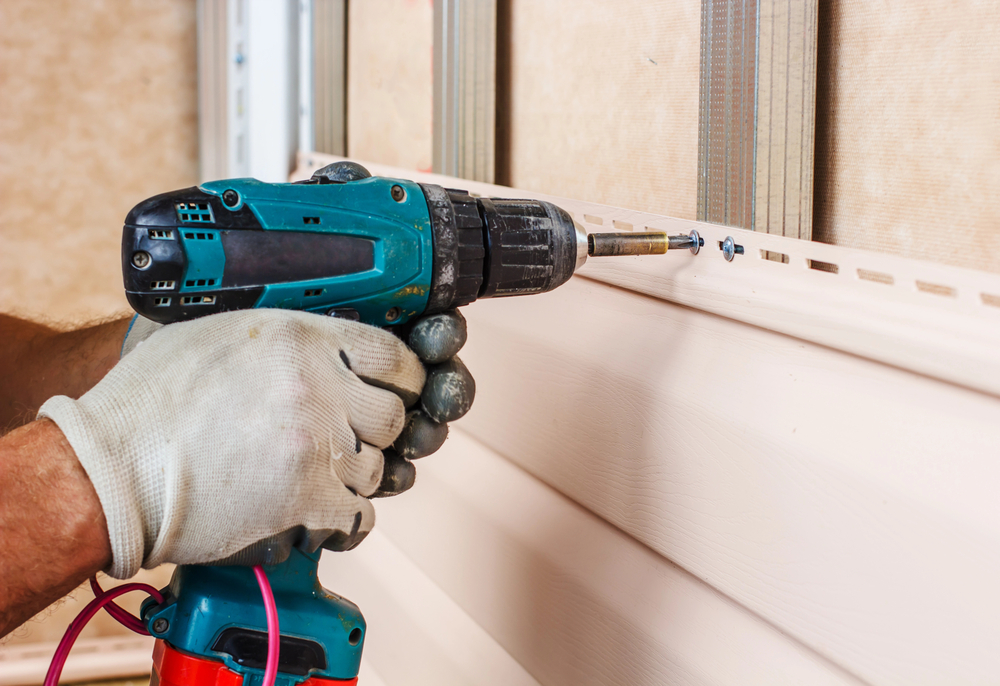Not sure when to replace the siding? Perhaps you’ve noticed some wear and tear, but you’re still wondering whether that’s significant enough to warrant a full siding replacement. Have a look at these six signs that could indicate it’s time for a refresh on your home’s exterior.
Cracked, Warped, or Decaying Siding
One of the most visible signs that it might be time to replace your house siding is when you start noticing warping, cracking, or decay. Whether you have wooden siding or vinyl, these issues can be indicators of deeper problems.
For wooden siding, look out for crumbling panels or dark spots, which suggest moisture has penetrated the wood fibers, leading to rot. Similarly, cracked or warped sections in vinyl siding can allow water infiltration, causing moisture buildup and structural damage over time.
Presence of Mold, Fungus, or Mildew
Keep an eye out for any growths, such as fungus, mold, or mildew, on your siding. While some growths may be harmless, they indicate excess moisture, which can compromise the integrity of your siding and lead to more severe issues if left unaddressed. Regularly inspecting your siding for signs of mold or mildew can help you catch potential problems early and prevent further damage.
Visible Bubbles or Blisters
If you notice blisters or bubbles forming beneath the surface of your siding, it could be a sign of trapped moisture. Siding is designed to protect your home from the elements, so the presence of blisters or bubbles suggests that it may no longer be functioning effectively. Addressing these issues promptly can help prevent further damage to your home’s exterior and underlying structure.
Severe Fading of Siding
Over time, exposure to the elements can cause the siding to fade and lose its color. Severe fading is a sign that the protective layer of your siding has deteriorated, leaving your home vulnerable to damage from moisture, sunlight, and other environmental factors. If your siding has become significantly faded, it may be time to consider replacing it with newer, more durable materials.
Increased Energy Bills
Have you noticed a sudden increase in your power bills? This could be an indication that your siding is not providing sufficient insulation for your home anymore.
Older or damaged siding can allow heat to seep out during wintertime and cold air to seep in during summertime, making your HVAC appliances work even harder to sustain a comfortable temperature. Replacing your siding with a more energy-efficient option can help lower your energy bills and improve your home’s comfort levels.
Interior Damage
Damage to your home’s interior, such as peeling paint, loose wallpaper, or water stains, can also indicate problems with your siding. Moisture that seeps through damaged siding can lead to water damage and mold growth inside your home, compromising indoor air quality and structural integrity.
If you notice any signs of interior damage, it’s essential to inspect your siding and tackle any issues as quickly as possible.
Get Quality Siding Replacement with Garden State Home Remodeling
Knowing when to replace siding can help you protect your home from damage and maintain its value over time. Whether you’re dealing with warping, mold growth, or increased energy bills, investing in new siding can provide long-lasting benefits for your home and family.
If you find yourself dealing with these siding issues all the time, Garden State Home Remodeling can assist you in getting a replacement. As a certified NJ siding contractor, we can guarantee that our high-quality claddings maintain their color and finish for many years without the need for frequent repainting or replacement. Contact us to get long-lasting exterior protection for your home today.


Leave a Reply